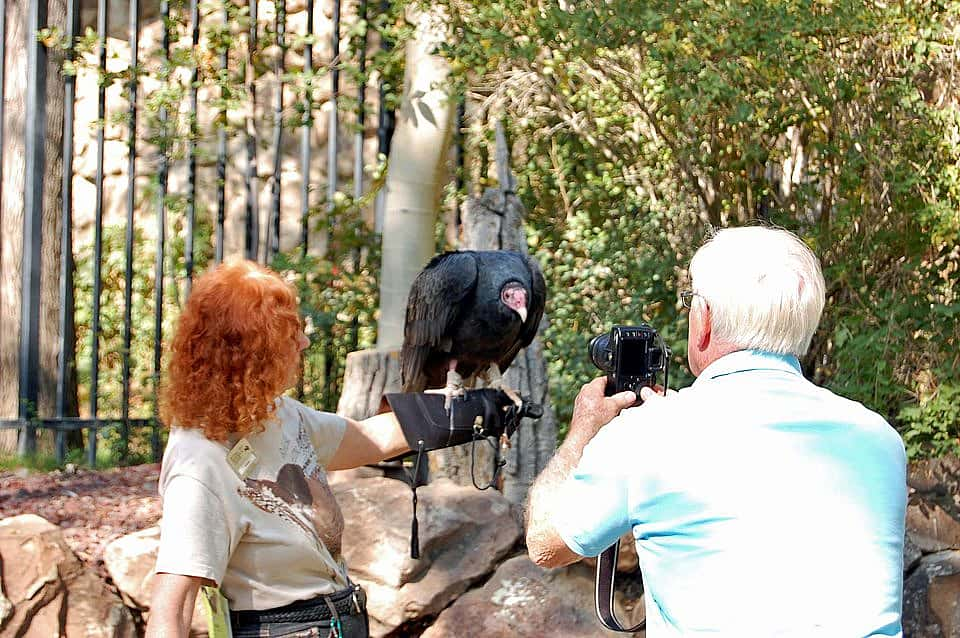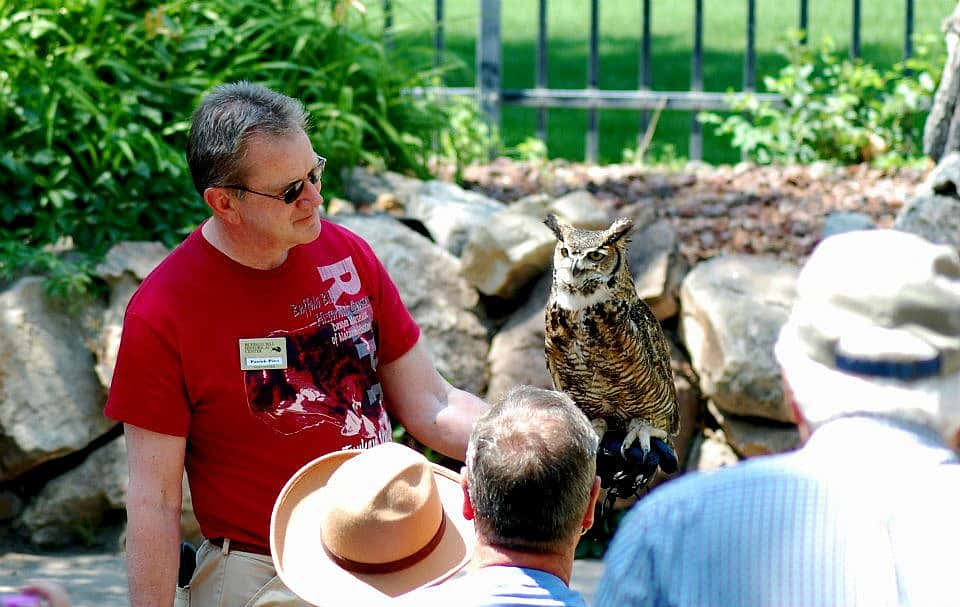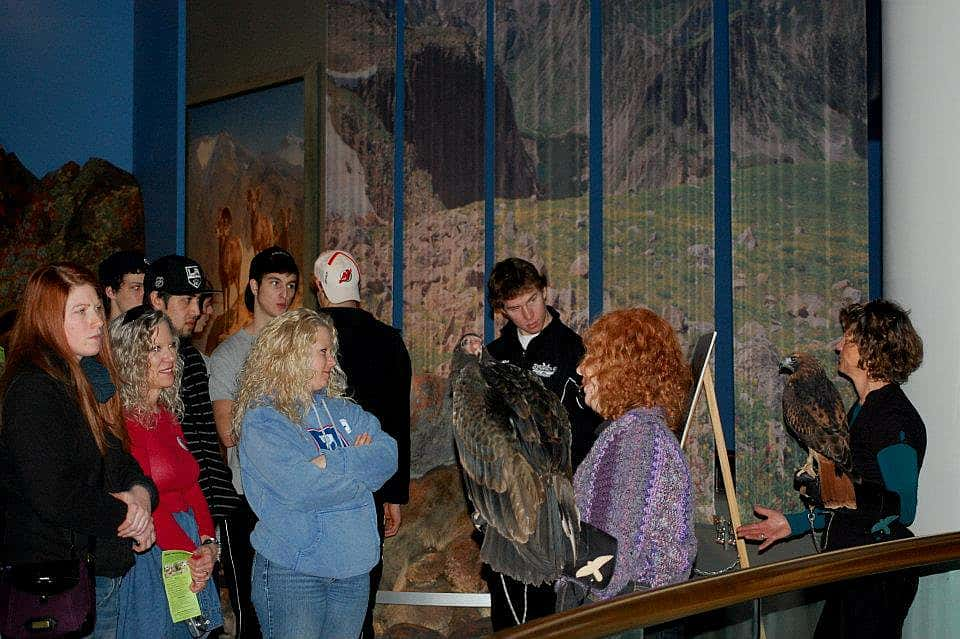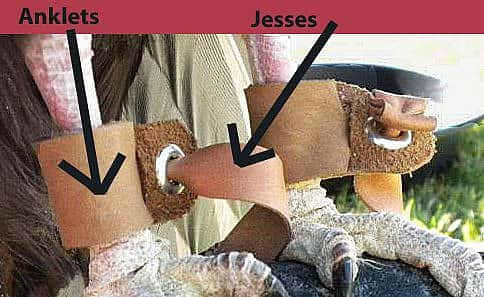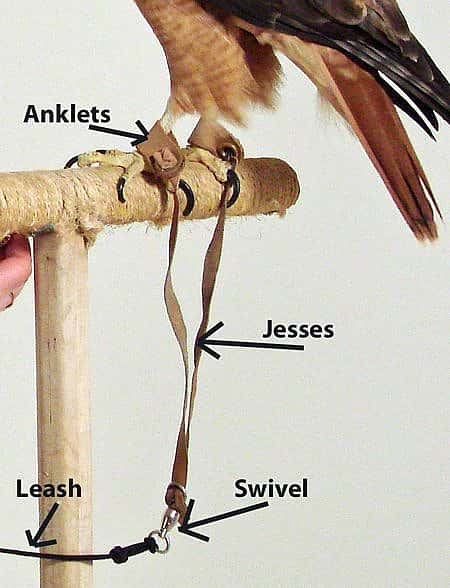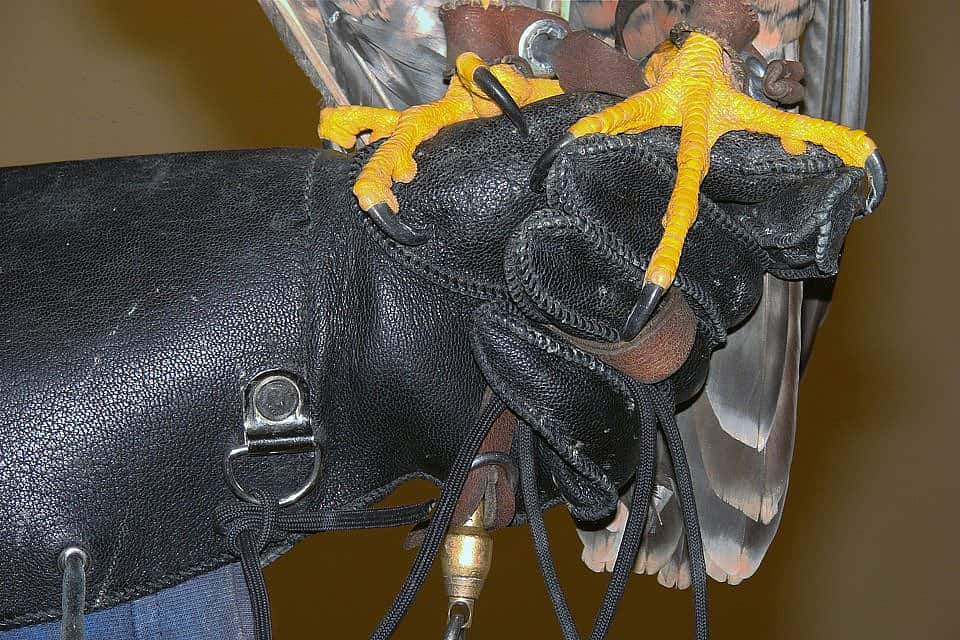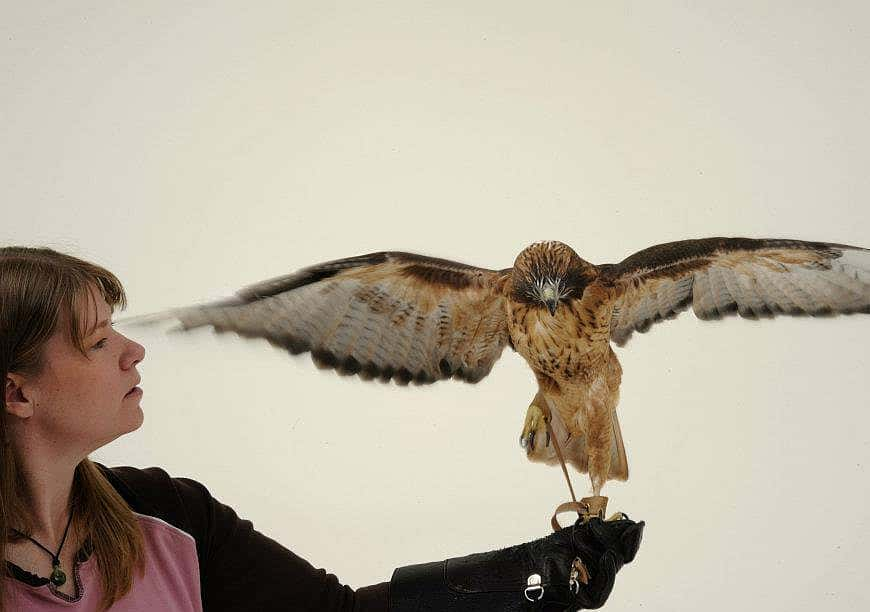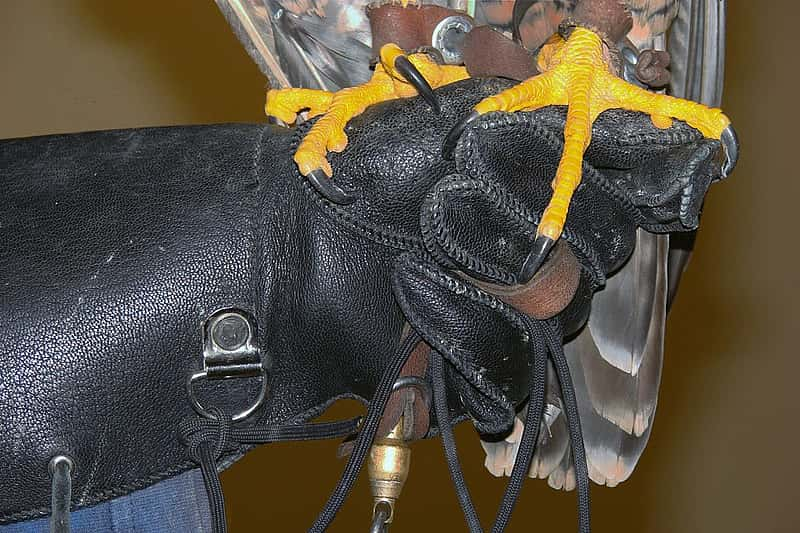
Is It Safe To Stand Close To the Birds? Or What are Anklets and Jesses?
How would you react if a turkey vulture with a five-foot wing span flew directly toward you? More than likely you would react the same way the guests standing nearby me did when Suli tried to fly from my glove. They gasped, and jumped backwards. We invite the public to come forward and stand within what we consider a safe distance from us, so that they can get a close up view of the birds, take photos, and ask questions.
I have been asked a number of times if it is safe to get closer to the birds, and have had a few people who were afraid to get as close as we allow. After explaining why the birds can not fly away from me, they feel much more comfortable in coming forward.
If you have been reading our blogs, you have seen the terms anklets, jesses, swivel, and leash. I recently had a friend that asked for a clarification of these terms. The first items we dress the birds with are their anklets. These are leather straps that go around the bird’s legs, similar to you wearing a bracelet. The birds adapt to wearing anklets, and these remain on the birds at all times. At first, Teasdale, our great horned owl, was not pleased about this new thing around his legs, and would chew his up. Now, however, he no longer pays any attention to them.
Jesses are straps that are threaded through the anklets, and used by a handler to securely hold a bird when it is on their glove. All of our birds, except Teasdale, wear their jesses at all times. Teasdale, has decided anklets are OK, but it is just too much for us to ask him to wear jesses too. When we try to leave his jesses on, he simply takes a hold of the knots and pulls his jesses out, so that we find them on the floor under his favorite perch. Because of this, before picking him up, our first task is to thread his jesses through his anklets. The diagram below will show you both the anklets and jesses, when they are in place on a bird.
Each of the jesses have a slit at the bottom, where a swivel is attached. This swivel needs to be attached with one hand, as at this point the bird is standing on a handler’s left arm, with the jesses woven through the handler’s fingers. After threading the swivel onto the jesses, a leash is attached to the swivel, again only with the free hand. The swivel and leash are only on the birds when they are standing on a handler’s glove, in their travel boxes, or are placed on a perch, such as outside in the yard. The diagram below will help you to clearly see what each of these items are.
So let’s get back to the original question pertaining to if it is really safe for our visitors to come close to the birds. The jesses are held in the hand that the bird is perched on. But not just held, the jesses are also looped over the ring finger, and under the little finger, so that the jesses are securely locked into the hand. The leash is then tied to the glove with a specific knot that we learn at one of our early lessons with Melissa. Again, this knot must be tied with our free hand.
In the photo, notice how Melissa has the jesses locked down by weaving them over her ring finger, and under her little finger. Using the glove knot, Melissa has tied the leash to the d-ring, which is a permanent part of the glove.
Notice the photo of Melissa with Isham on her glove. If you read my blog about Isham, I called the little hop he is doing, his hop-hop dance. You can see that if Isham decided to fly away from Melissa, he would not get very far. So, as long as our visitors stay the distance from us that we ask, they do not have to worry about their safety.
Questions from Visitors: What is a bate?
A bate is when a bird decides to fly from our glove. Since the jesses are locked into the handler’s hand, and the leash is tied to the glove, the bird is quickly brought to a halt, and often ends up upside down. Captive birds learn how to flap themselves back onto our glove, and become quite good at this, as long as the handler holds his or her arm still. In the case of a bird who is able to fly, such as Suli our turkey vulture, instead of ending upside down, the jesses in our hand may force the bird to fly in a tight circle, before settling back onto the glove.
Written By
Anne Hay
Anne Hay has a Bachelor's degree in Elementary Education and a Master's in Computers in Education. She spent most of her working years teaching third grade at Livingston School in Cody, Wyoming. After retiring she began doing a variety of volunteer work for the Buffalo Bill Center of the West’s Draper Natural History Museum. Anne loves nature and has a concern for the environment. She believes that educating the public, so that they will have a better understanding and appreciation for the natural world, is very important. Because of this belief, volunteering at the Center is a perfect fit. She spends time in the Draper Lab, observing eagle nests for Dr. Charles Preston’s long-term research project on nesting golden eagles, writing observation reports of raptor sightings in the Bighorn Basin, and working with the Draper Museum Raptor Experience. Anne states that, “Having a bird on my glove, is one of my all time favorite things in life.”
